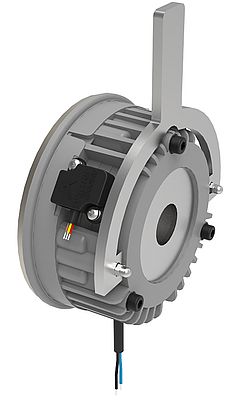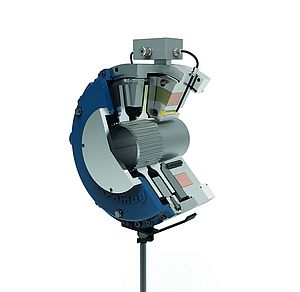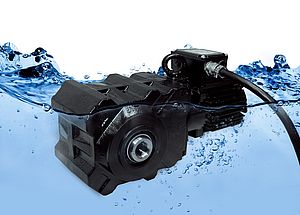Outdoor and certain indoor applications place greater demands on an electromagnetic brake. Securing the long-term integrity of the brake in difficult conditions is all important for consistent stopping performance. Ultimately, specialisation is required to deliver this performance level, which in many cases, translates to an increased brake cost.
This is especially true when it comes to specifying electromagnetic brakes with a high ingress protection (IP) rating. A higher IP rating usually translates to an increased overall cost, which is before any additional options have been specified – likely in a brake that is designed for a demanding application.
However, the utilisation of modern composite materials is challenging this, allowing for innovative brakes to combine both high performance and value. The new FRCB from Warner Electric is a prime example. Designed with a specialised composite, the FRCB can provide highly reliable stopping performance in challenging conditions due to an IP66 rating.
The result is a highly specialised brake that offers both value and performance in outdoor or demanding indoor applications. Matched with a modular design that accommodates many options – OEMs can now specify the FRCB to reduce weight and costs. However, this is achieved while still providing end users with the performance required for an optimised total cost of ownership (TOC).
Consistency is key
Like any brakes, electromagnetic brakes feature friction material. Friction material is usually tailored to provide peak stopping performance within a small operating window. While this is fine for certain applications, for heavy duty applications where temperature and atmospheric conditions can vary greatly, this operating window compromises the consistency of braking performance. The specialisation of brake friction material can therefore limit the performance of electromagnetic brakes in demanding applications.
To secure consistent brake friction material performance over a wide operating window, Altra has brought the formulation of friction material in-house. This allows total control of the formulation process, which enables the operating window of the material to be widened. Furthermore, the quality consistency of the material is improved compared to sourcing from a third-party supplier.
This is the exact route taken by Warner Electric. Its new W134 brake friction material has been specialised to deliver consistent performance across varying operating conditions in heavy-duty powertrain applications. Expert chemists have formulated W134 to provide static and dynamic braking functions with high torque stability, a high friction coefficient matched by non-sticking properties ideal for outdoor applications. An exact fit for Warner’s existing range of electromagnetic brakes – W134 has been optimised to consistently carry out high energy braking and heavy stops in all conditions.
Sensitive monitoring
Accurate wear monitoring is all important for brakes in demanding applications. Ensuring that maintenance work can be carried out in a planned and efficient manner is all important in preserving uptime. Fundamentally, actioning this structured approach to brake maintenance is dependent on the accuracy of the information supplied by the brake monitoring solution.
Until now, traditional options for brake monitoring have presented problems in several industrial applications. Mechanical microswitches suffer contact pollution issues, which greatly affects the accuracy of measurement. The other option, proximity switches, are affected by temperature which increases hysteresis and damages sensitivity. For demanding applications in challenging environments, neither is truly suited to providing accurate brake monitoring.
The WES (Warner Electric Sensor) ensures accurate brake monitoring as it is a contactless solution. Without relying on a mechanical contact, contact pollution issues are eliminated, ensuring repeatable accuracy. Furthermore, between the operating temperatures of -40° to 105°C, hysteresis is less than 0.05 mm. Consequently, the limitations of microswitches and proximity switches are removed, allowing operators to gain highly accurate monitoring data to plan maintenance accordingly.
The next generation electromagnetic braking system
While individual innovations can provide tangible benefits, combining them all within a single braking system compounds the advantage. As a leading brand of the Altra Industrial Motion Corp., Warner Electric’s FRCB brake range, W134 brake friction material and the WES can all be specified together. This interoperability delivers cost-effectiveness, consistent performance and highly accurate monitoring data within a complete assembly. The next generation electromagnetic braking system can be supplied from a single source, providing OEMs with not only an innovative solution, but a highly reliable one too.
By Mourade Vaneeckhoutte, Global Sales Director at Altra Industrial Motion Corp





























